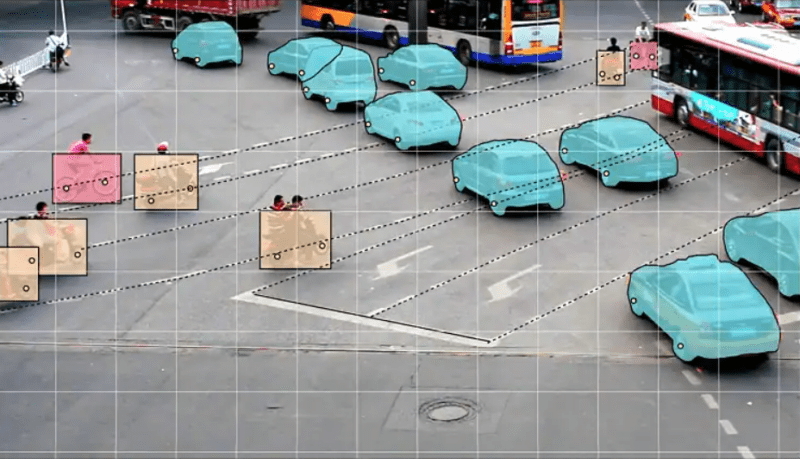Data annotation for autonomous vehicles There Driving are multiple image annotation types such as polygons, bounding boxes, 3D cuboids, semantic segmentation, lines, and splines that can be incorporated into autonomous vehicles. The main goal of data annotation in automobiles is to classify and segment objects in images or videos.
We’ve seen a lot of buzz about autonomous and semi-autonomous vehicles. As it involves enabling machines to mimic or surpass human vision, training such models requires large labeled datasets.
The effectiveness of machine learning depends on several factors, one of which is data labeling. Various image annotation types, such as polygons, bounding boxes, 3D cubes, semantic segmentation, lines, and splines, can be built into machine learning models. These annotation methods can help improve the accuracy of autonomous driving algorithms. However, you must choose the labeling method that works best for you based on the requirements of your project.
Common Data Labeling Types
3D cuboid
This type is similar to the bounding boxes discussed earlier, where the annotator draws boxes around objects in the image. However, as the name implies, the bounding box in this type of annotation is 3D, allowing objects to be labeled in depth, width, and length (X, Y, and Z axes).
The tagger draws a box that captures the object of interest and places anchor points on each edge of the object. If an edge is missing or occluded by another object, the tagger estimates the location of the edge based on the properties of the object and the angle of the image. This estimation/labeling plays a crucial role in judging the distance of objects from the car based on depth and detecting the volume and position of objects.
polygon
Sometimes the shape and size make it difficult to add bounding boxes around certain objects in the image. Polygons enable accurate object detection and localization in images and videos containing irregular objects. It is one of the most commonly used labeling methods due to its accuracy. However, accuracy comes at a price – it is more time-consuming compared to other methods. Irregular shapes such as humans, animals, and bicycles require more than 2D or 3D bounding boxes for labeling.
Polygon labeling can be a useful technique for algorithms used in self-driving cars because it enables annotators to define other aspects, such as road sides, sidewalks, and obstacles.
semantic segmentation
So far we have looked at defining objects in images, but semantic segmentation is much more precise than other techniques. It deals with associating each pixel in an image with a class. Self-driving cars need to understand their surroundings to operate successfully in the real world. The technology classifies objects into categories such as cars, bicycles, pedestrians, sidewalks, traffic lights, and more. Typically, these will form the list that the tagger will have. In summary, semantic segmentation detects and classifies objects, localizes and segments them for computer vision. Medical imaging is one area where this technology has gained wide acceptance.
Lines and Splines
In addition to recognizing objects, models need to be trained on boundaries and lanes. Annotators draw lines along lanes and edges in images to help train the model. These lines enable cars to recognize or identify lanes, a key requirement for the success of autonomous driving, as it allows vehicles to navigate traffic smoothly while still obeying lane rules and avoiding accidents.
The main goal of data annotation in automobiles is to classify and segment objects in images or videos. The models discussed in this article are the ones most relevant to the automotive industry. They help enable precision, which is important for automotive as it is a mission-critical industry, and precision, in turn, defines the user experience. Other annotation types are used, but they are not specific to training models for autonomous vehicles.
Provide world-class solutions around various automotive electronic systems. To learn more about our automotive and data labeling services and AI/ML expertise, please contact our experts.

 Afrikaans
Afrikaans Albanian
Albanian Amharic
Amharic Arabic
Arabic Armenian
Armenian Azerbaijani
Azerbaijani Basque
Basque Belarusian
Belarusian Bengali
Bengali Bosnian
Bosnian Bulgarian
Bulgarian Catalan
Catalan Cebuano
Cebuano Chichewa
Chichewa Chinese (Simplified)
Chinese (Simplified) Chinese (Traditional)
Chinese (Traditional) Corsican
Corsican Croatian
Croatian Czech
Czech Danish
Danish Dutch
Dutch English
English Esperanto
Esperanto Estonian
Estonian Filipino
Filipino Finnish
Finnish French
French Frisian
Frisian Galician
Galician Georgian
Georgian German
German Greek
Greek Gujarati
Gujarati Haitian Creole
Haitian Creole Hausa
Hausa Hawaiian
Hawaiian Hebrew
Hebrew Hindi
Hindi Hmong
Hmong Hungarian
Hungarian Icelandic
Icelandic Igbo
Igbo Indonesian
Indonesian Irish
Irish Italian
Italian Japanese
Japanese Javanese
Javanese Kannada
Kannada Kazakh
Kazakh Khmer
Khmer Korean
Korean Kurdish (Kurmanji)
Kurdish (Kurmanji) Kyrgyz
Kyrgyz Lao
Lao Latin
Latin Latvian
Latvian Lithuanian
Lithuanian Luxembourgish
Luxembourgish Macedonian
Macedonian Malagasy
Malagasy Malay
Malay Malayalam
Malayalam Maltese
Maltese Maori
Maori Marathi
Marathi Mongolian
Mongolian Myanmar (Burmese)
Myanmar (Burmese) Nepali
Nepali Norwegian
Norwegian Pashto
Pashto Persian
Persian Portuguese
Portuguese Punjabi
Punjabi Romanian
Romanian Russian
Russian Polish
Polish Samoan
Samoan Scottish Gaelic
Scottish Gaelic Serbian
Serbian Sesotho
Sesotho Shona
Shona Sindhi
Sindhi Sinhala
Sinhala Slovak
Slovak Slovenian
Slovenian Somali
Somali Spanish
Spanish Sundanese
Sundanese Swahili
Swahili Swedish
Swedish Tamil
Tamil Tajik
Tajik Telugu
Telugu Turkish
Turkish Ukrainian
Ukrainian Urdu
Urdu Uzbek
Uzbek Thai
Thai Vietnamese
Vietnamese Welsh
Welsh Xhosa
Xhosa Yiddish
Yiddish Yoruba
Yoruba Zulu
Zulu